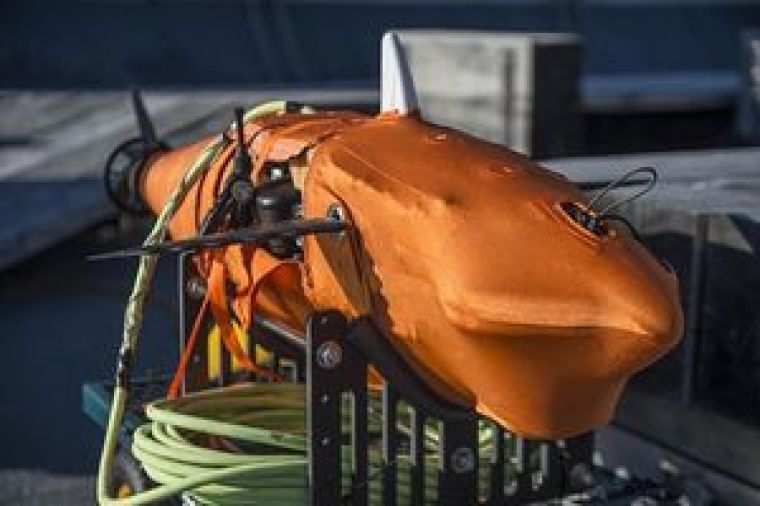

The American military uses nature's design, like animals, for their latest technology or biomimicry. The GhostSwimmer is the newest outcome of this technology, designed to look and swim like a fish.
The new gadget, a five feet long and closely 100 pounds, is almost the same size of albacore tuna but from a distance it looks like a shark.
The tail of the robot, similar to real fish, is used for control and propulsion. It can be operated in 10 inches to 300 feet deep water. It is remotely controlled via a 500-foot tether, or it can swim independently, but surfaced periodically to communicate.
The robofish, complete with pectoral fins and dorsal, is surreptitious too. It moves and looks like a fish. Like other vehicles on underwater, it is hard to locate.
The Robofish could work for reconnaissance missions, surveillance, and intelligence when it is not assigned to do ordinary tasks. Animal advocates will be happy knowing that GhostSwimmer could remove the tasks of the California sea lions and Bottlenose dolphins that the Navy trains at present to recover equipment and recognise underwater mines.
The GhostSwimmer includes on the types of animal-based robots such as the "Cheetah" which can run approximately 30mph, the Stickybot which climbs similar to gecko, and cockroach-inspired iSprawl, which can cover 7.5 ft/sec. The Department of Homeland Security financed the development of a smaller but similar robot named the BIOSwimmer.
There are lots of acronyms that suits the new toy: The UVV (unmanned underwater vehicle) was tested at JEBLC-FS (Joint Expeditionary Base Little Creek-Fort Story), created by CRIC (Chief of Naval Operations Rapid Innovation Cell), and was called Silent NEMO (for no specific implication).
GhostSwimmer was developed by Advanced Systems Group at Boston Engineering, a Navy contractor which specialises on robotics' development, unmanned system, and "special tactical equipment. The Navy or the company is silent on how much GhostSwimmer cost and when it will be deployed.